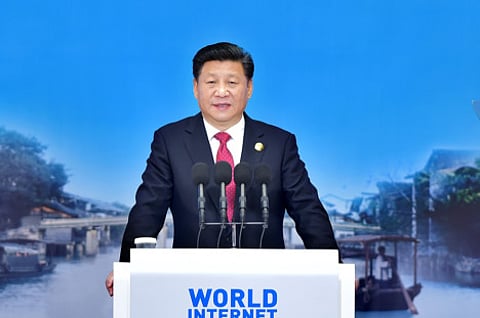‘Chinese navy wants to reach eastern Pacific’
China is successfully advancing its cause on two different fronts, as it continues a hardline military approach and working to reshape the global institutional architecture to its favour

The drama this week in the South China Sea was commented on by Gordon Chang in the Daily Beast, who said that Beijing was pushing out in all directions, across the South China Sea to several Japanese islands and maybe even to the eastern Pacific that laps American shores. On the day after Christmas, three Chinese boats entered Japan’s territorial waters surrounding the Senkaku Islands in the southern portion of the East China Sea, which was the first time that China had sent an armed vessel into an area that Tokyo claims.
If Beijing gets its way, US military bases will be off Okinawa soon, and Japan will be out of Okinawa, too, wrote Chang, who ended his comment with a chilling quote from a Beijing commentator: “Our navy wants to push through the island chains and reach the eastern Pacific,” said Zhang Haipeng of the People’s Daily at the 2013 Renmin University seminar. The eastern Pacific washes onto American shores, Chang pointed out.
The action in Japan happened during the same week that Vietnam experienced what it called a serious Chinese incursion as the Guardian reported after Vietnam formally accused China of violating its sovereignty by landing a plane on an airstrip Beijing has built on an artificial island in a contested part of the South China Sea which Vietnam says has been “built illegally” on Fiery Cross Reef in the Spratly archipelago, in territory that was “part of Vietnam’s Spratlys”.
China’s foreign ministry rejected the complaint, saying that what was a test flight to the newly built airfield on the reef was a matter “completely within China’s sovereignty”, the Chinese state news agency Xinhua reported.
The drama in the South China Sea was put into wider context by Chinese commentators, who saw the action in Japan and Vietnam as China exercising its natural rights, while the foreign policy main task for China is the pursuit of the “Chinese Dream”, under which China aims to create what it calls a global community with shared destiny. Wang Yiwei, of Renmin University, wrote in the China Daily that when confronted with the US-led Trans-Pacific Partnership Agreement, which 12 countries recently agreed to (excluding China), as well as Washington’s increasingly aggressive interventions in the South China Sea issue, Beijing has responded calmly but firmly, without losing its ground and relinquishing its legitimate interests.
In the face of the Chinese initiatives, the New York Times argued in favour of the established multilateral system of global governance, using an editorial to argue that it was more inclusive and constructive than the emerging network of regional deals. The NYT took the failure of the Doha Round as an example of a great loss to the world, which should not just be accepted, and the paper urged governments to stand up for its values. It wrote: “After 14 years of talks, members of the World Trade Organisation have effectively ended the Doha round of negotiations. That was not unexpected given how fruitless these discussions have been. Now, world leaders need to think anew about the global trading system.” It went on: “Many countries have been so frustrated by the Doha stalemate that they have been negotiating bilateral and regional trade deals.”
Sign up for the Daily Briefing
Get the latest news and updates straight to your inbox



